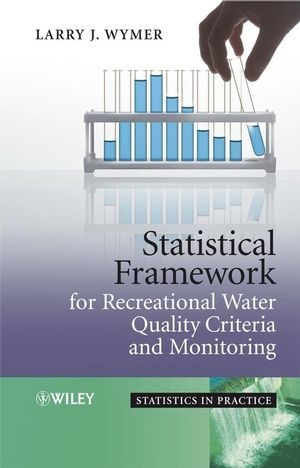Read more
Informationen zum Autor Larry Wymer, Mathematical Statistician, US Environmental Protection Agency. Mr Wymer has been involved with recreational water criteria for the past six years, and has published numerous papers in many international journals in this field. Klappentext With increasing rates of pollution to both land and aquatic environments, regulations for the quality of our waters are necessarily becoming more stringent. In the light of recent epidemiological studies new criteria are being established for the safety of our recreational waters. In order for such criteria to be developed an established statistical framework needs to be in place.Statistical Framework for Recreational Water Quality Criteria and Monitoring offers a practical guide to the statistical methods used for assessing health effects and monitoring and modelling water quality Both traditional and novel sampling designs are discussed. Written by a team of international experts in the field, this book sets out to provide an essential structure for the monitoring of water quality.* Proposes a much-needed framework for the monitoring of water quality, and provides practical guidance on the statistical methods involved.* Covers risk characterization, empirical modelling, sensitivity analysis and measures of robustness.* Details sampling methods and quality control approaches.* Presents crucial, real-life results from recent large-scale studies of water quality, central to the development of the area.* Accompanied by a supplementary website hosting data sets and tools for data analysis.The book is primarily aimed at public health officials, staff of regulatory bodies and students and faculty members of environmental and statistical science courses. There is also much to benefit readers from environmental research and risk analysis. Zusammenfassung Based on the EPA Office of Water's most recent epidemiological studies being conducted at the Great Lakes beaches, Statistical Framework for Recreational Water Quality Criteria and Monitoring provides a framework in the context of these studies, providing details on traditional and novel sampling designs. Inhaltsverzeichnis Contributors vii Preface ix 1 The evolution of water quality criteria in the United States, 1922-2003 1 Alfred Dufour and Stephen Schaub 2 A management context for the statistical design of recreational contact water quality monitoring programs 13 Stephen B. Weisberg 3 Conceptual bases for relating illness risk to indicator concentrations 19 D.F. Parkhurst, G.F. Craun, and J.A. Soller 4 On selecting the statistical rationale for revised EPA recreational water quality criteria for bacteria 45 Richard O. Gilbert 5 Sampling recreational waters 69 A.H. El-Shaarawi and S.R. Esterby 6 The lognormal distribution and use of the geometric mean and the arithmetic mean in recreational water quality measurement 91 Larry J. Wymer and Timothy J. Wade Copyrighted Material 7 The EMPACT beaches: a case study in recreational water sampling 113 Larry J. Wymer 8 Microbial risk assessment modeling 135 Graham McBride 9 A plausible model to explain concentration - response relationships in randomized controlled trials assessing infectious disease risks from exposure to recreational waters 153 Albrecht Wiedenmann 10 Nowcasting recreational water quality 179 Alexandria B. Boehm, Richard L. Whitman, Meredith B. Nevers, Deyi Hou, and Stephen B. Weisberg 11 Statistical sensitivity analysis and water quality 211 Alessandro Fassò Index 231 ...

